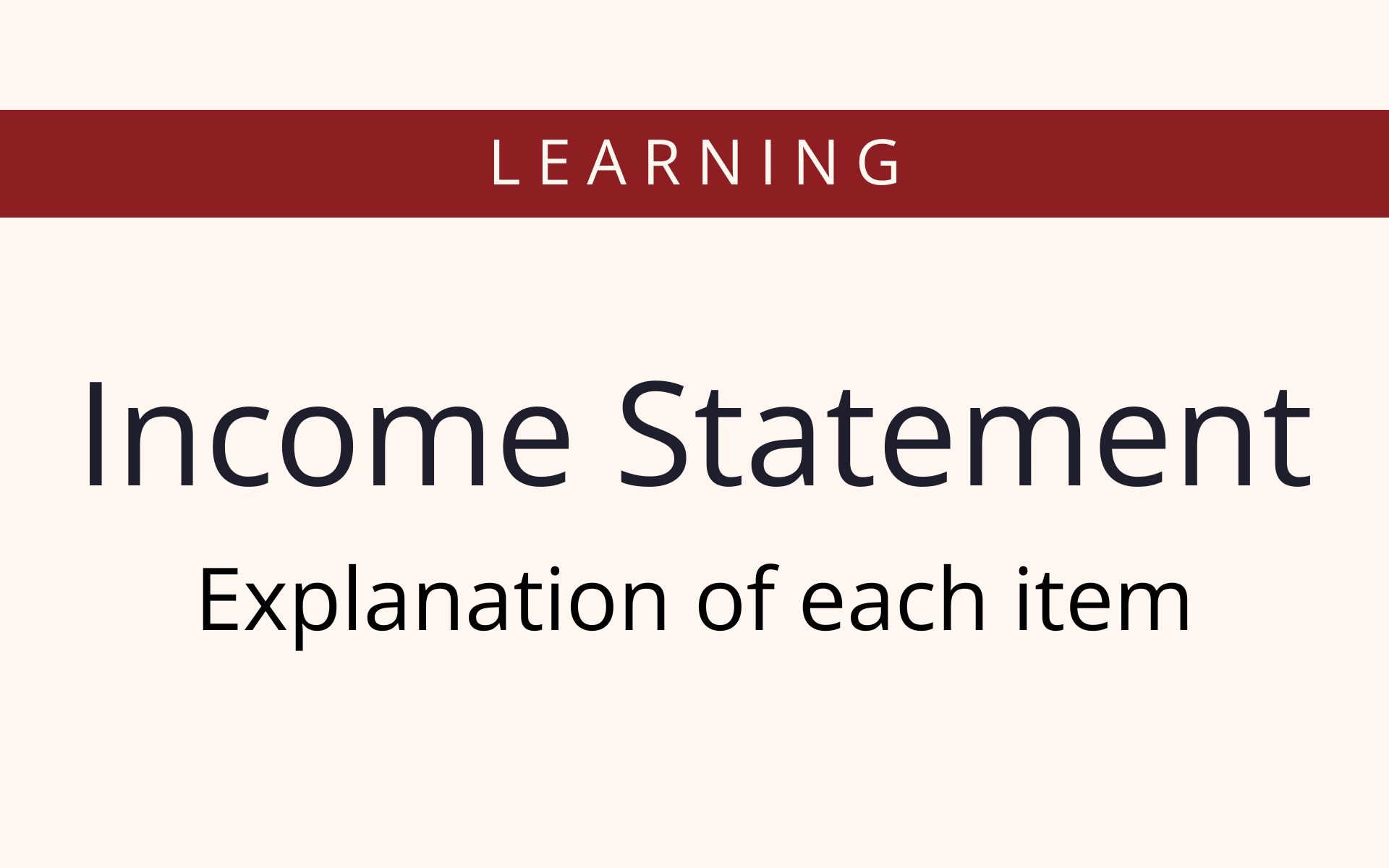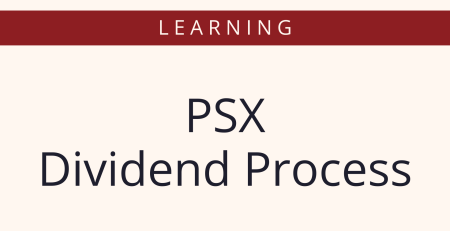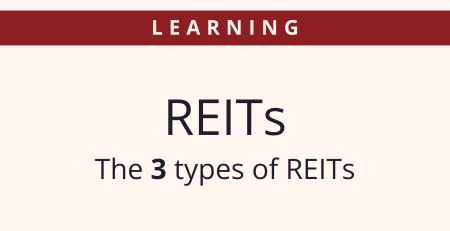Posted by: KSEStocks Explainer
Post Date: May 15, 2023
Income Statement – A beginner’s guide
A brief explanation of each item found on the income statement of a company.
| Item | Explanation |
|---|---|
| Revenue/Sales | The total amount of money earned by a company from its primary business activities, such as sales of goods or services. |
| Revenue Growth (YoY) | The percentage increase or decrease in revenue compared to the previous year (Year-over-Year), indicating the rate of growth or decline in the company’s sales. |
| Cost of Revenues | The expenses directly associated with producing or delivering the goods or services that generate revenue, such as the cost of raw materials, direct labour, and manufacturing overhead. |
| Gross Profit | The difference between revenue and the cost of revenues, representing the amount of money left after deducting the direct costs of producing goods or services(cost of revenues), but before accounting for other expenses. |
| Gross Profit Margin | The gross profit expressed as a percentage of revenue, indicating the profitability of a company’s core operations after accounting for the cost of goods sold. |
| R&D Expenses | Research and Development expenses incurred by a company to discover or improve products, processes, or technologies. |
| Selling and Marketing Expense | The costs associated with promoting and distributing a company’s products or services, such as advertising, sales commissions, and marketing campaigns. |
| General & Admin Expenses | General and Administrative expenses related to a company’s overall operations, including salaries of non-production staff, office rent, utilities, and other administrative costs. |
| Other Inc / (Exp) | Other Income or Expenses that are not directly related to a company’s primary business activities, such as gains or losses from investments, currency exchange fluctuations, or legal settlements. |
| Operating Expenses | The sum of R&D expenses, selling and marketing expenses, and general and admin expenses, representing the total costs of running a company’s day-to-day operations. |
| Operating Income | Also known as Operating Profit or Earnings Before Interest and Taxes (EBIT), it is the difference between gross profit and operating expenses, indicating the profitability of a company’s core operations. |
| Net Interest Expenses | The interest expenses incurred by a company on its outstanding debt, such as interest on loans, bonds, or credit lines, after deducting any interest income earned. |
| EBT, Incl. Unusual Items | Earnings Before Taxes, including any unusual or non-recurring items that may affect a company’s profitability, such as gains or losses from the sale of assets or extraordinary expenses. |
| Earnings of Discontinued Ops. | The income or loss generated from business operations that a company has decided to discontinue or sell. |
| Income Tax Expense | The amount of taxes owed by a company based on its taxable income, calculated by applying the appropriate tax rate to the company’s taxable earnings. |
| Net Income to Company | Also known as Net Profit or Net Earnings, it is the remaining profit after deducting all expenses, including operating expenses, interest expenses, taxes, and other income or expenses. |
| Minority Interest in Earnings | The portion of a subsidiary’s earnings that is attributable to the minority shareholders or investors who do not have a controlling interest in the subsidiary. |
| Net Income to Stockholders | The total profit or earnings of a company after deducting all expenses, including taxes and any dividends paid to preferred stockholders. |
| Preferred Dividends & Other Adj. | The dividends or distributions paid to preferred stockholders and any other adjustments made to the net income to account for specific circumstances related to preferred stock. |
| Net Income to Common Shareholders | The portion of net income available to common stockholders after subtracting preferred dividends and any extraordinary or non-recurring items that may affect the company’s overall profitability. |
| Basic EPS (Cont. Ops) | Basic Earnings per Share (EPS) from Continuing Operations is the portion of net income attributable to common stockholders divided by the weighted average number of basic shares outstanding during a specific period. |
| Diluted EPS (Cont. Ops) | Diluted Earnings per Share (EPS) from Continuing Operations takes into account the potential dilution of shares from stock options, convertible securities, or other instruments that could be converted into common stock. |
| Weighted Average Basic Shares Out. | The average number of basic shares outstanding during a specific period, taking into account any changes in the number of shares outstanding throughout the period. |
| Weighted Average Diluted Shares Out. | The average number of diluted shares outstanding during a specific period, considering the potential dilution of shares from stock options, convertible securities, or other instruments. |
| EBITDA | Earnings Before Interest, Taxes, Depreciation, and Amortization (EBITDA) represents a company’s operating income before deducting interest, taxes, depreciation, and amortization expenses. |
| EBIT | Earnings Before Interest and Taxes (EBIT), also known as operating profit, is the measure of a company’s profitability before deducting interest and income tax expenses. |
| Revenue (Reported) | The total revenue reported by a company in its financial statements. |
| Operating Income (Reported) | The operating income reported by a company, which represents the profit generated from its core operations after deducting operating expenses but before deducting interest and income tax expenses. |
| Operating Income (Adjusted) | The operating income adjusted for certain non-recurring, unusual, or extraordinary items that are not considered part of a company’s regular operations, providing a clearer picture of the ongoing profitability of the core business. |
⚠️ This post reflects the author’s personal opinion and is for informational purposes only. It does not constitute financial advice. Investing involves risk and should be done independently. Read full disclaimer →












Leave a Reply